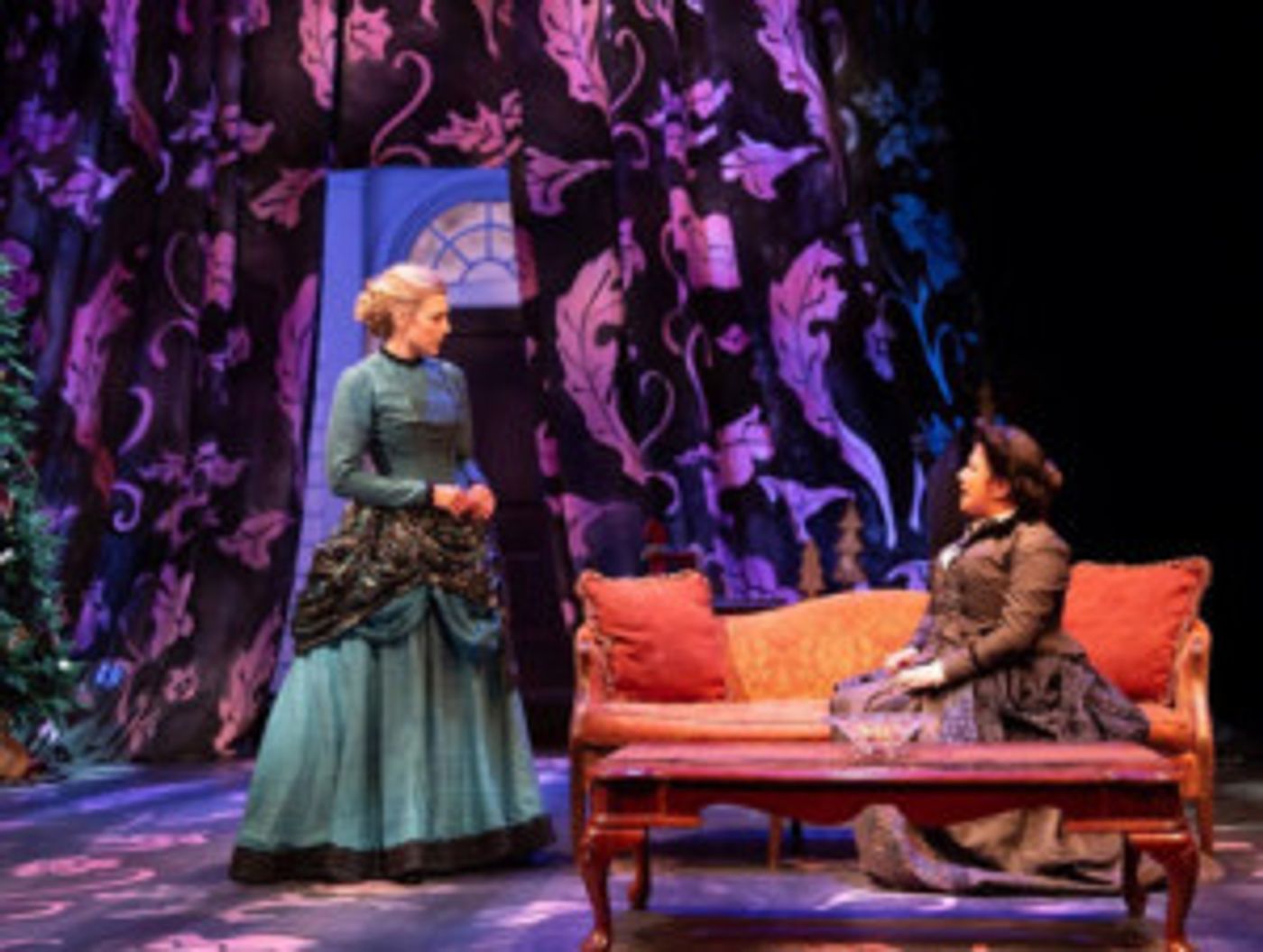Review: A DOLL'S HOUSE Comes Alive at WaterTower Theatre

I have to admit, when I first saw that WaterTower Theatre's season touted a modern adaptation of A Doll's House by Henrik Ibsen, I was wary. Modernizing a classic is a risk whose success depends largely on motive. If done as a conscious and careful choice, it can deepen an audience's understanding of the piece. If done haphazardly, perhaps to cover an inadequate budget or a director's cursory understanding of the original text, it may have some fun modern elements, but they will likely be distracting rather than illuminating. Thankfully, WaterTower offers a sophisticated and enlightening modernization. Director and adapter Joanie Schultz modernizes the language and keeps the design firmly rooted in history. The choice to adapt does not hide a lack of understanding on Schultz's part - it in fact shows a true depth of understanding and familiarity with the text. It certainly does not disguise an insufficient budget; elaborate and historically correct fashions created by Melissa Panzarello and Amy Poe, in conjunction with a marvelous set designed by Chelsea M. Warren, convincingly portray the wealth of the late 17th century family at the heart of the drama. And if Schultz feared the audience might not understand? Rather than putting a band aid on that fear with some flashy modern props, she digs into the root of the misunderstanding, the translation from old Norwegian into modern English.
It does beg the question - why not just bring this story all the way into the 21st century with both language and design? The answer may lie with the plot itself. An outdated law that dictates that a woman cannot borrow money without the signature of her father or husband is a critical plot point in A Doll's House. In order to bring that into a modern story, one would have to change Ibsen's plot, which does not appear to be Schultz's goal. Her adaptation stays very true to the original. While current events make it a relevant time to produce a story of female emancipation such as this, the adaptation draws no blatant parallels to today's politics. Schultz seems more interested in letting the story speak for itself. The play still lives in 1878, but Schultz brings 1878 closer to our modern understanding.
A Doll's House tells the story of Nora Helmer, devoted wife to Torvald Helmer. Nora is reputed to be flighty, scampering about the house sneaking sweets from little hiding places, behavior that earns her the nickname of Torvald's little squirrel. But Nora is a lot smarter and braver than her frivolous behavior lets on. She has saved her husband's life without his knowledge, incurring a great deal of debt. She attempts to pay off the debt secretly, but her lender blackmails her for an accidental white-collar crime. When Torvald eventually finds out about Nora's crime and her debts, he shows his true colors, scolding Nora fiercely, accusing her of poisoning his home. In the famous final scene of the play, Nora confronts Torvald, is struck with sudden self-awareness, and realizes her marriage is a sham. She leaves Torvald and her children behind, vowing to discover herself. Usually the last moment of the play is the slamming of the front door behind Nora, but that leaves Torvald the last person onstage, allowing him to usurp the story from Nora. Director Schultz, scenic designer Warren, and lighting designer Driscoll Otto have all jointly created a gravely powerful silent moment at the end that enables Nora to reclaim the story.
Though all the actors do the play justice, the two lead actresses really stand out. The role of Nora has been a vehicle for many an actress to showcase her chops, and Kate Paulsen is no exception. While Nora can sometimes be portrayed as that silly little squirrel through and through, Paulsen's Nora wears the frivolous persona as a mask only when her husband or certain guests are around. Paulsen portrays not a "little woman," but a woman who has learned to make herself small. One moment Paulsen is charmingly wiggling her bustle in the direction of Sam Henderson, who plays her husband, and the next she is alone and still, worry rising above the cheerful act. Also noteworthy is Gloria Vivica Benavides' portrayal of Kristine Linde, Nora's childhood friend and her foil. Kristine's somber mood and bitter sarcasm grate on Nora's cultivated mask of cheerfulness. Despite Kristine's inherent bitterness, Benavides still manages to keep Kristine a very likable character. She may be solemn, but she is honest, wise, and independent. Benavides has a very grounded presence. She successfully imbues Kristine with deep self-awareness and self-acceptance, and provides some much-needed moments of levity with her subtle wry commentary.
This production is full of very smart, purposeful choices. It is carefully crafted, much like the titular doll's house. It would be wrong to bill it as a 21st century version of A Doll's House though. It is a modern translation of a 17th century story. While the story has been brought closer to the audience's understanding through the use of modern language and some very concise and superbly clear storytelling, it is the same story as it has always been. And that story, in my mind, is worth countless retellings.
A Doll's House runs through November 4th at WaterTower Theatre. Call the box office at 972-450-6232 or visit www.watertowertheatre.org for tickets.
Photo credit: Jason Anderson
Reader Reviews
Videos


